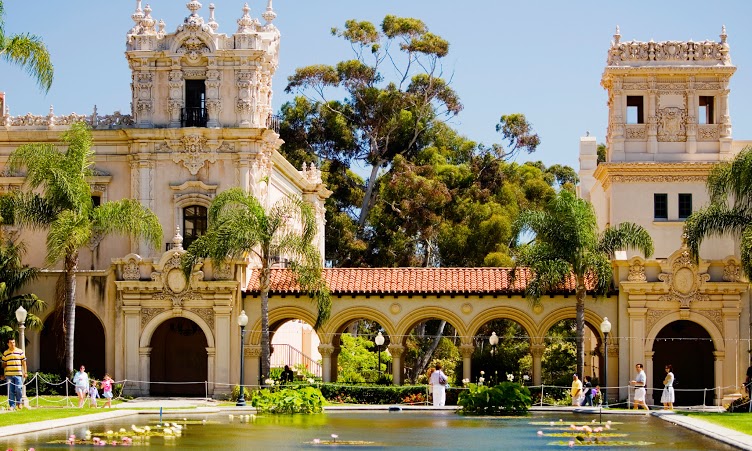
Beginning as a relatively barren mesa sectioned off by city officials in 1868, San Diego’s Balboa Park—then known only as City Park—looked quite different than it does today. The park now covers almost 2 square miles and is an epicenter of cultural and outdoor activity in the city, claiming the world-renowned San Diego Zoo, a host of San Diego museums, and miles of biking and hiking trails. Still, with everything Balboa Park offers its more than 10 million annual visitors, its lush green spaces and winding paths hide some little-known secrets.
Historical Oddities
Arguably the park’s most well-known attraction, the San Diego Zoo opened with a roar—literally. Visiting Balboa Park for the space’s Panama-California Exposition in 1916, a surgeon named Dr. Harry Wegeforth overheard a lion roaring from its fair-exhibit cage. The roar inspired Wegeforth to start a zoo in the park, and he went on to serve as the zoo’s president until he died in 1941.
Today, Zoro Garden is a beautiful, stone-lined grotto and butterfly garden sitting across from the San Diego Natural History Museum. But some visitors might not know that it began as something starkly different: a nudist colony. Put on as an adults-only sideshow during the 1935 California Pacific International Exposition, the controversial attraction featured undressed male and female performers lounging, playing basketball, and even staging “religious sacrifices.”
Secrets You Can Investigate Today
On the east edge of the park next to Cabrillo Bridge sit two green expanses that, if you time your visit right, will be filled with white-clad men and women rolling balls across the grass. The game is lawn bowling, and those playing are members of the San Diego Lawn Bowling Club. The club has been bowling in Balboa Park’s rinks (lawn-bowling parlance for the playing surface) for more than 80 years, and they offer free lessons for San Diego residents.
Normally, Balboa Park’s Pepper Grove is home to a traditional kids’ playground. But visitors walking by on Sunday afternoons will find themselves immersed in the bright, festive world of Brazilian samba dancing. Each week, nonprofit organization Super Sonic Samba School enlivens the space with samba’s rhythmic drumming and dancing, and since the event is free, any passerby can stop and dance along.
Balboa Park’s 65 miles of trails give visitors plenty of places to get lost in gorgeous, natural surroundings, and Palm Canyon is one of the park’s best—yet sometimes overlooked—spots to do just that. True to its name, the trail is packed with more than 450 palm trees, some of which have held roots in the canyon since the early 1900s. Hikers traversing the tropical stretch of parkland can walk across a wooden footbridge that looks like it was taken from The Swiss Family Robinson, and there’s a massive Moreton Bay fig tree whose sprawling, twisting roots resemble an art piece more than a natural phenomenon.






